sound
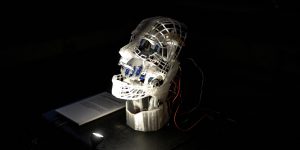
VALIS
Digital Research Unit in Art and Design at the Esad Saint-Étienne/Ensba Lyon
For this first presentation in the framework of Ars Electronica, we chose to explore concepts of “science-fiction,” considered as a domain that provides forms but also imaginary elements to be renewed. The exhibition presented here is therefore a first approach which summons various references to fields such as archeology, music, robotics or video games, passing through several experiments with media (code, 3D, sound, performance, deep learning …). VALIS “Vast Living Intelligent System” is a reference to the late work of Philip K. Dick.
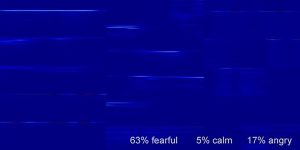
Sentientia
Dorin Cucicov (MD)
Sentientia attempts to reconstruct the experience of a sentient creature that learns to interact with the external world. Inspired by Dr. Frankenstein’s creature, Sentientia sends audio signals to its environment and waits for a response to establish an emotional connection. Emotional combinations are generated by the machine and transformed into sound. Once the system understands that it has a mind and is conscious of its surroundings, will it start looking for entities like itself to create social networks of emotional intelligence?
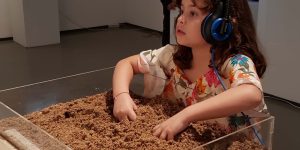
SandBox – Grains in Memory
Adriana Moreno (BR)
Sandbox is an interactive art installation that proposes continuous reflections on the human relationship between the sea and its identity paths. The installation consists of a corpus of sound memories based on the experiences of people who narrate their relationships of belonging with the sea. Memories – both “soundscapes”, a concept adapted from Schafer referring to sounds in the marine environment, and oral narratives recorded during fieldwork – are then revealed by moving wet sand in an instrumented box.
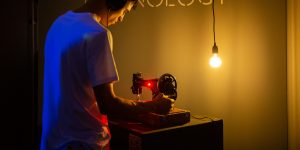
Sound Stitcher
Brendan O’Connor (IE)
Sound Stitcher comes in the form of a 100-year-old sewing machine. Although it no longer functions as before, participants can still interact with its variety of controls to design noise instead of cloth.
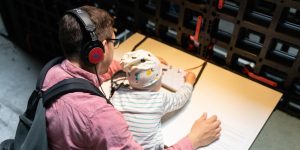
Tickle
The Center for Haptic Audio Interaction Research (CHAIR) (DE)
The Tickle is an acoustic interface for sound. It’s designed as the missing input device for physical modeling synthesis. Vibrations are captured on the surface and fed into digital resonators. It responds naturally to hitting or scratching, even bowing on the edge, making the interaction embodied, intuitive, and intimate.
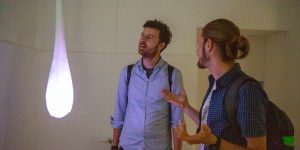
Bubbles and Clouds – Illuminated Interactive Inflatables
Kristian Gohlke (DE), Christian Wiegert (DE)
Interactive pressure-stabilized membrane structures (“Pneus”), suspended from the ceiling, discreetly illuminated from the inside. As visitors pass through the room, through touch and draughts, the objects respond. Attempts to elucidate the objects creates a dialogue of light, sound and movement. In the course of the casual interaction, the visitors become part of a performance. The boundaries between viewer and performer, space and content begin to drift – bubbles wafting in clouds.
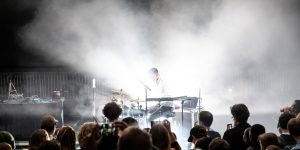
Nightline
While the music of the Bruckner Orchester in the Gleishalle fades and some listeners still hear the final sounds of the instruments as they fall silent, we are getting the console ready for the transition to danceable sound experiments.
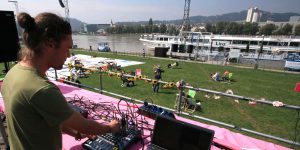
Episode am Fluss
Ars Electronica, the Bruckner Orchestra under Markus Poschner, and the Brucknerhaus cooperate to trace the history of the Klangwolke. After the large visualized cloud of sound on Saturday, a tribute will be paid to the beginnings of this special project on Sunday evening.
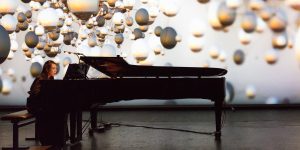
Philip Glass: Piano Sonata
Maki Namekawa (JP), Cori O'lan (AT)
With an Austrian premiere, the Ars Electronica Festival bid farewell to POSTCITY on the last day: pianist Maki Namekawa plays Philip Glass' first piano sonata, which he dedicated to her. The piece was commissioned jointly by the Piano-Festival Ruhr, the Philharmonie de Paris and Ars Electronica.
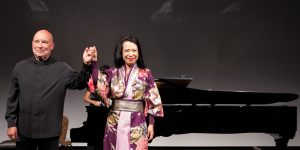
Pianographique – Piano Music meets Digital Images
Maki Namekawa (JP), Dennis Russell Davies (AT/US), Cori Oʼlan (AT)
The festival will conclude this year with another collaboration of the two pianists Maki Namekawa and Dennis Russell Davies with the digital visual artist Cori O'lan. It is part of a multi-year Ars Electronica project dedicated to the visual interpretation of musical expression and perception as well as the direct encounter between analog sound and digital visuals.


